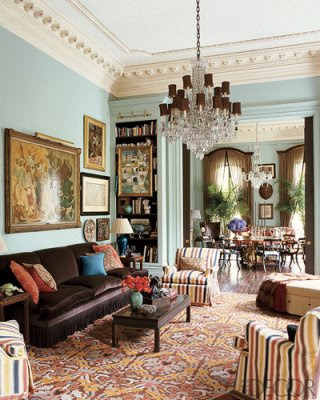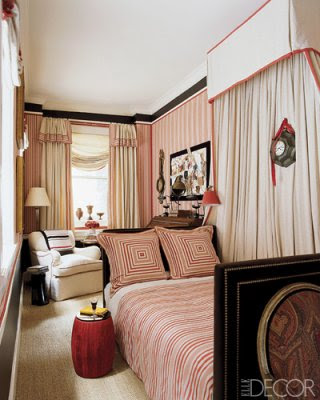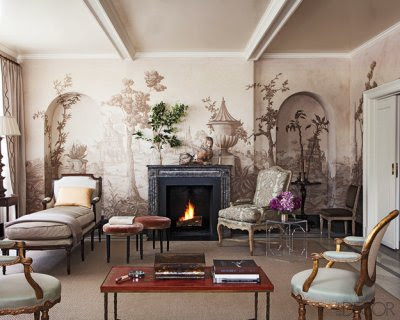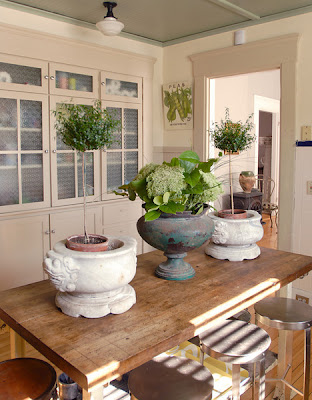A DELICATE MATTER…Just Saying No to Tacky Design
joy of nesting
How does one broach a touchy subject with candor and class? The answer is delicately. The delicate topic is “tacky design”. First, there are so many designers available today who’s works are truly lovely. Scot Meacham Wood. Grant Gibson. And uber success stories Suzanne Rheinstein and Michael Smith to name just a few. Each possess their own design philosophies based on quality, style, personality, and design integrity. Gratitude to them all.
Room above Richard Keith Langham.
Room above by Allessandra Branca.
In an ideal world designers have a well rounded aesthetic sense, a good business mind, and peerless ethics. The most obvious problems happen when an individual enters the field of design for the wrong reasons. They are ego, money, and an overblown idea of one’s own level of talent. We have all heard and seen the horror stories: inflated budgets, blown deadlines, and elaborate design schemes created by misinformed stylista’s. Trust me, a Tuscan villa outside of Tuscany is rarely a good idea. Giving a client any finished product that is contrived is not professional.
Above room Suzanne Rheinstein.
How do we designers set ourselves apart from the horror stories? Since it’s a visual field, we build beautiful websites, author concise articles and visually pleasing blogs, emphasize “lifestyle” rather than specific design ideals, we build our word of mouth reputations, we develop our own visual sense, and most importantly we take the time to get to know each of our clients.
Room above McAlpine-Booth-Ferrier.
To understand a well rounded view of tasteful residential and commercial design trends read shelter publications Architectural Digest, Veranda, House Beautiful, and Elle Decor. Travel of course is still one of the best forms of exposure. It is how many design professionals find finspiration for their work. Visit designer showcases and showrooms and approach them with an open mind.
So how do you know when you see “tacky” design work? Either you rely on a designer who knows the difference or you develop your own sense of style. Inform yourself so you know the difference between elegant and gauche, rustic and cutesy, minimal and sterile. A space should move you, should evoke positive feelings, should feel comforting, should tell a story. If it’s your home the story should be about you.
Years ago I read something that I found amusing but saw some truth to it. To quote Mario Buatta, or something to this effect, “I would love to see people with money have more taste, and people with taste have more money.”




